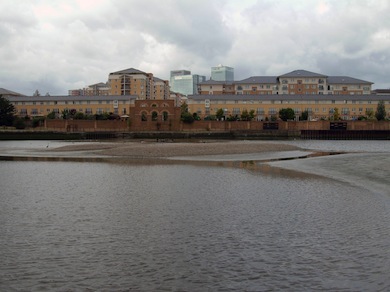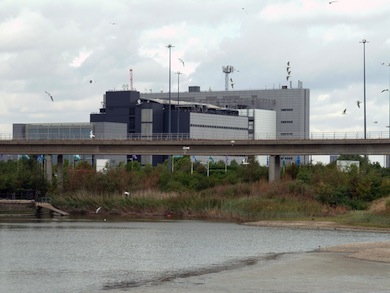East India Dock Basin is all that remains of the docks of the East India Company, famous for shipping spices in the late 19th century. Since its closure in 1967, the Dock Basin has been turned into a bird sanctuary, and is owned and managed by the Lea Valley Regional Park Authority.The site is made up of a diverse range of habitats, including saltmarsh (unique in this stretch of the Thames), reedbed and grassland. Rafts have been created in the open water for birds. There is also a band of boggy willow woodland along the northern edge, and two further blocks of woodland in the southeast and southwest corners. The site is open daily, access being via a gate in Orchard Place or from the Thames path, and its birds can also be viewed from the slip road to the Lower Lee Crossing.
Local Wildlife Site
Accessible Sites of Importance for Nature Conservation
East India Dock Basin
Borough: Tower Hamlets
Grade: Borough Grade I
Access: Free public access (all/most of site)
Area: 3.94 ha
Description
Wildlife
Along the northern side of the dock common reed and sea club-rush form a dense reedbed. The saltmarsh is dominated untypically by buttonweed, with sea milkwort and sea arrowgrass. Wild celery, a rarity in London, has also established. The dock walls support fern-grass, wild carrot and sea aster.The flower-rich grassland, managed as meadow, includes two of the more unusual exotics at the site, warty cabbage and salsify. This is in addition to meadow flowers such as ladies bedstraw and salad burnet.The nesting rafts are used by numerous birds including cormorants, Canada geese, mallards and mute swans, as well as black redstarts and kingfishers.Facilities
Information (on signs). Ramps, walkways and steps have been constructed for access, and further facilities to aid birdwatching are to be provided.
East India Dock Basin © Edwin Van Ek

East India Dock Basin © Edwin Van Ek
Feedback
Have a question or a comment for this site, or notice anything missing or out of date? Please contact us.
